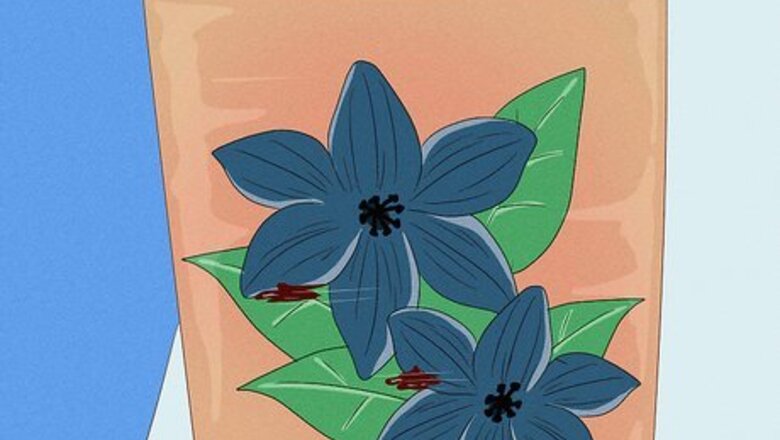
views
Identifying the Symptoms of an Infected Tattoo
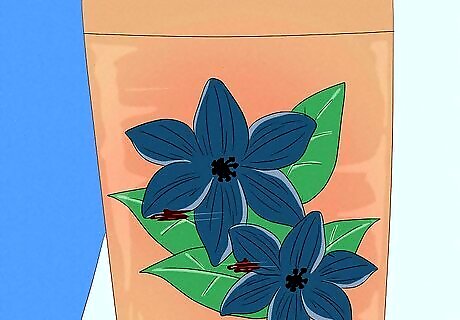
Expect small amounts of blood and fluid during a new tattoo's healing process. After a new tattoo, you should expect small amounts of blood for up to 24 hours. Your tattoo should not be soaking a bandage, but a little amount of blood is normal. You should also be prepared for clear, yellow, or blood-tinged fluid to be released in small amounts for up to one week after the procedure. You can also expect a new tattoo to be raised for a week after you get it. After about a week, your tattoo will start flaking into small flecks of colored or black ink. If the area begins is discharge pus, you could have an infection. Contact your doctor or dermatologist to get it checked out.
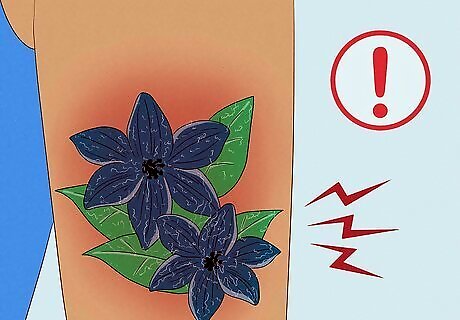
Check for any fever, swelling, inflammation, or itching. Your tattoo shouldn't be painful, tender, or itchy after a week. If it is, it's probably infected.
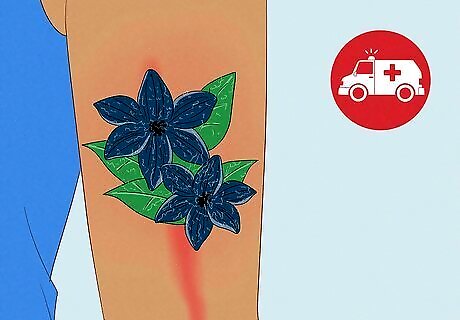
Go to the doctor immediately if you see red streaks. Red streaks are a sign that there is an infection, and it may be spreading. Occasionally, streaking can be a sign of blood poisoning, also known as sepsis. They look like red lines shooting out from your tattoo in every direction. Sepsis can cause serious illness, so seek out a doctor or medical professional immediately. Note that general redness is not a sign of blood poisoning.
Treating Mild Inflammation at Home
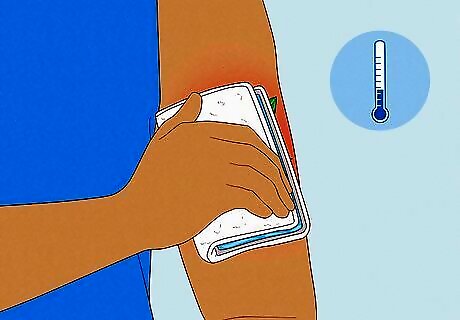
Apply a cold pack to reduce inflammation. Do not place ice directly onto your skin. Instead, wrap the ice in a thin towel before placing it on your skin. Apply the ice for 10 minutes. Remove the ice for 5 minutes to let your arm rest. Repeat 2-3 times a day as needed.
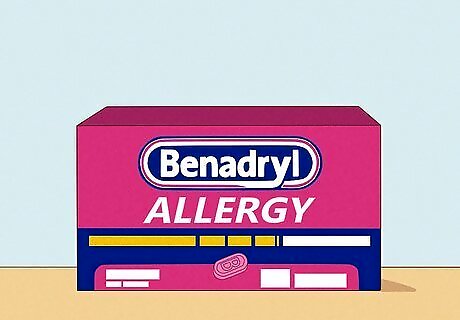
Take an antihistamine to relieve itching. An antihistamine like Benadryl can help reduce inflammation and itching. Always take an antihistamine with a meal, and never take more than the prescribed amount. Don't take an antihistamine like Benadryl if you know you're allergic to it.
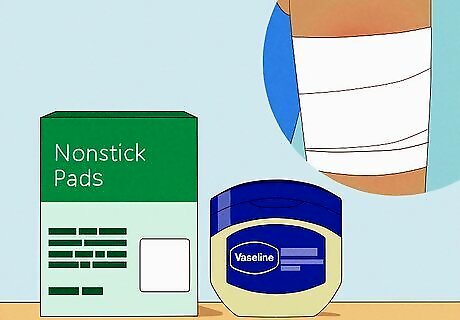
Use petroleum jelly and a nonstick bandage to protect your tattoo. Apply a thin layer of a petroleum jelly product like Vaseline or Aquaphor. Cover your tattoo in a nonstick bandage to protect it from dirt, dust, and sun exposure. Replace both the jelly and the bandage daily. If the bandage sticks when you try to remove it, soak the bandage with warm water before trying again.
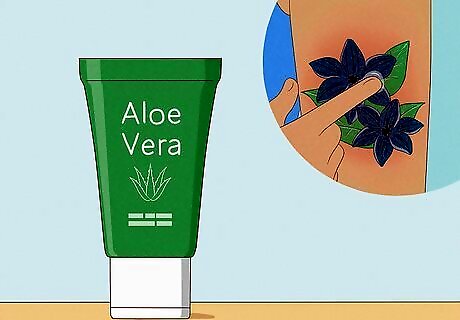
Sooth and treat a mild skin irritation with aloe vera. Aloe vera contains compounds that may ease pain and promote skin repair. Leave the tattoo and aloe vera uncovered until it dries. Reapply as needed.
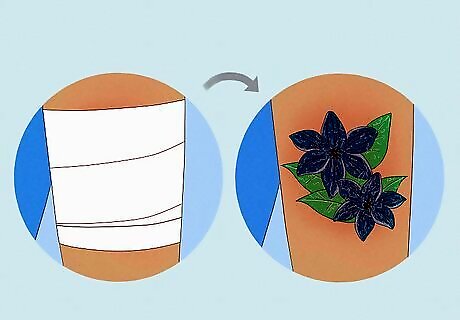
Let your tattoo breathe whenever possible. While it is important to cover your tattoo from dirt, dust, and sunlight, it's equally important to let your tattoo breathe. Exposing your tattoo to clean, shady air gives your body the chance to heal it on its own. When you're home, remove the bandage.

Go to the doctor after two weeks or if symptoms get worse. If these methods are not working to treat your inflammation, or if your symptoms got worse after you started treating them, see a doctor or dermatologist. They can take a skin biopsy or blood test to determine the best measures for treating your tattoo infection. Your doctor may prescribe antibiotics or other medicine that you can't access without a prescription.
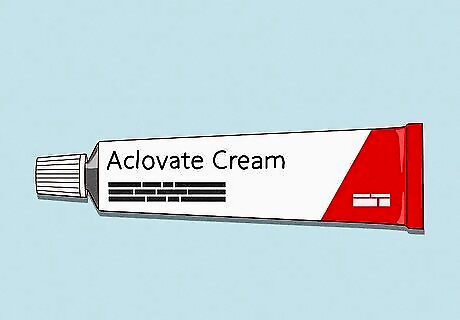
Treat an allergic reaction with a topical steroid ointment. Unlike infections, allergic reactions are caused by ink, most commonly red ink. If you have a red rash that looks bumpy and feels itchy, you probably have an allergic reaction. Such a reaction won't go away with traditional infection treatments. Treat an allergic reaction with a topical steroid ointment until it goes away. For a mild topical steroid ointment, try Derma-Smoothe or Aclovate Cream. For slightly stronger options, try Dermatop Cream or Cultivate Cream. If you're not sure what strength of topical steroid ointment you should get, ask your dermatologist for advice.
Preventing Future Infections
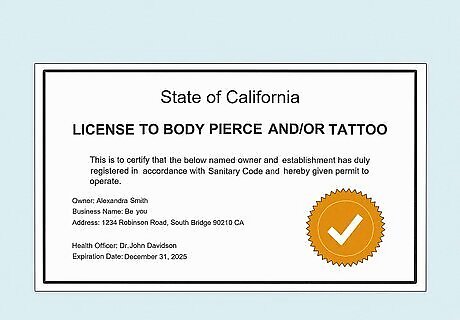
Get any future tattoos at licensed tattoo shops. Before getting a tattoo, make sure your tattoo parlor has the proper licenses and uses clean and safe methods. All tattoo employees should wear gloves, and your needles and tubes should be in sterile, sealed packages before being used. If you feel uncomfortable with your chosen tattoo shop's procedures, find a new one!
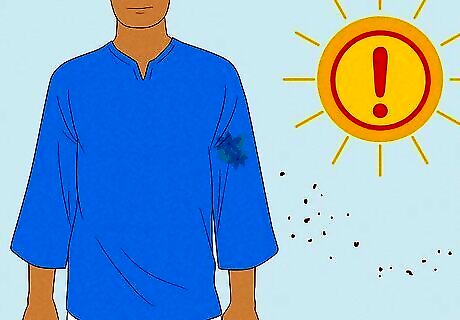
Keep the skin covered for 24 hours after getting a tattoo. This helps the tattoo heal during its tenderest stage and protects it from dirt, dust, and sunlight.
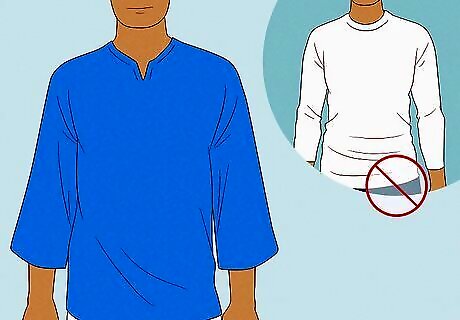
Wear loose clothing that won't stick to your tattoo during the healing process. Clothing that rubs against a tattoo can cause an infection. If you're struggling to keep your clothing from sticking to your tattoo, cover your tattoo in petroleum jelly and a bandage for up to 6 weeks after getting it.
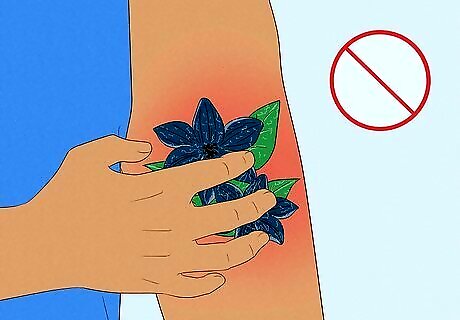
Avoid picking at your tattoo until it's fully healed. Scratching can damage your tattoo and cause infection.

Stay out of the sun and water for 6-8 weeks after getting a tattoo. Exposing your tattoo to water and sunlight increases the chance of infection and scarring. When showering, cover the tattoo in plastic wrap to keep it from getting wet. Pat, don't rub, your tattoo after washing. Rubbing can cause irritation or even puncture the skin.















Comments
0 comment